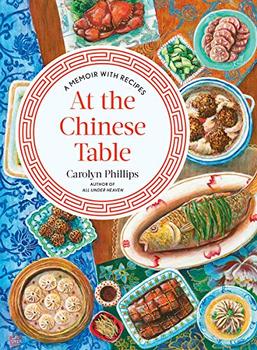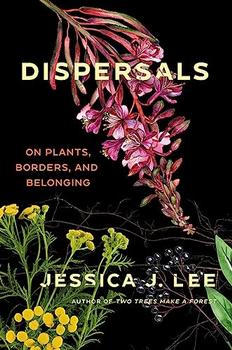Summary | Excerpt | Reviews | Beyond the Book | Readalikes | Genres & Themes | Author Bio

 Book Reviewed by:
Book Reviewed by:
BookBrowse First Impression Reviewers
Buy This Book
Since Auntie Lee rarely offers much in the way of carnivore extravaganzas, whenever I'm away from home I indulge in my seemingly infinite capacity for pork, especially Taiwanese delights like little braised pork-belly sandwiches sprinkled with cilantro, peanuts, and sugar that tickle my nose and feed my appetite. Looking to create a balanced meal of sorts, I always try to buy a bag or two of whatever fruits are in season, and I have quickly come to adore the island's tiny yellow watermelons known as "little jades," the fat lychees that spurt perfumed carbonated juices over my lips and down my arms, and the "black pearl" wax apples that possess a sparkly flavor and crispy texture I cannot describe, other than to say that they are insanely good.
But the problem remains that I still don't understand the foods of all the other provinces and culinary capitals of China. I'll traipse my way down Yongkang Street, say, to eat a chicken braised with a mountain of mysterious spices, and although the sign announces that this dish originated in Henan, I haven't a clue as to where that province is or why it matters or what role it played in Chinese history. I read the words Shanxi or Chaozhou on other menus, and all they tell me at this point is whether I'll be served something made of wheat or rice.
And so it goes, until a bowl of extravagantly seasoned Xi'an-style hand-pulled noodles piques my curiosity enough to make me take a more careful look at that vast map. Then I remember having read that emperors had long ago sited their capital there as a defensive garrison, albeit with the most enviable of palaces and the greatest of dining pleasures hidden within its ramparts. The imperial headquarters once called Chang'an lies far to the southwest of Beijing, and so, still wondering why its foods have such striking aromatics, I run my finger along a dotted line tracing the path of the ancient Silk Roads that once linked the Middle East and Central Asia with China, out in the vast windswept lands where the Great Wall crumbles into the sand dunes. A vision of caravans laden with heavy loads of fragrant spices traveling east along the Imperial Highway makes the multilayered flavors in that bowl of noodles come alive.
I store that tidbit of information in my mental Rolodex for later on, when I have more details to work with. But until then, with food supplying all sorts of clues, these place names cease to be mere notions, and I take closer and longer looks at that big old map as I consider what I'm going to have for lunch.
Deconstructing the layout of China was difficult, but food showed me the way, for I happened to be in the very right place for just the right handful of years. Once upon a time and over a couple of delectable decades, Taiwan was home to the greatest assemblage of Chinese cuisines in the world, and it all started in 1949.
Only four years after the end of World War II and all the atrocities that China had suffered at the hands of the Japanese, the Nationalists were losing in their civil war with the Communists. Chiang Kai-shek led his troops to a last, fortified stand on China's smallest province, the island of Taiwan. Fortunately for all concerned, many of the country's most inspired chefs had packed up and accompanied waves of wealthy and well-connected Mainlanders as they crossed the Taiwan Strait. Family cooks, talented soldiers with a longing for the foods of their ancestral villages, and gastronomes of every stripe and from every province filled in all the gaps. The sum of China's widely diverse cuisines was suddenly in one place. The thing is, though, as with so many complex food cultures like India and Mexico, the most creative culinary minds in China were much more likely to work in private homes than in restaurants.
Even nowadays, public restaurants are not where the rich and famous prefer to eat, despite the fact that China's people have been dining out for at least a thousand years—as can be seen in the massive scroll painting Along the River During the Qingming Festival—for China's culinary arts were more often than not developed in royal palaces, for the tables of the well-to-do, and with the enjoyment of the literati in mind. This is described beautifully in one of the country's most renowned cookbooks, The Sui Garden Gastronomy (Suíyuán shídān), which contains 326 recipes for dishes the poet Yuan Mei enjoyed in the dining rooms of friends and fellow gourmets during the late 1700s, not to mention the creations of his own kitchen, rather than in commercial establishments. And that tradition has continued to this day.
Excerpted from At the Chinese Table: A Memoir With Recipes. Copyright (c) 2021 by Carolyn Phillips. Used with permission of the publisher, W. W. Norton & Company, Inc. All rights reserved.




Happiness belongs to the self sufficient
Click Here to find out who said this, as well as discovering other famous literary quotes!
Your guide toexceptional books
BookBrowse seeks out and recommends the best in contemporary fiction and nonfiction—books that not only engage and entertain but also deepen our understanding of ourselves and the world around us.